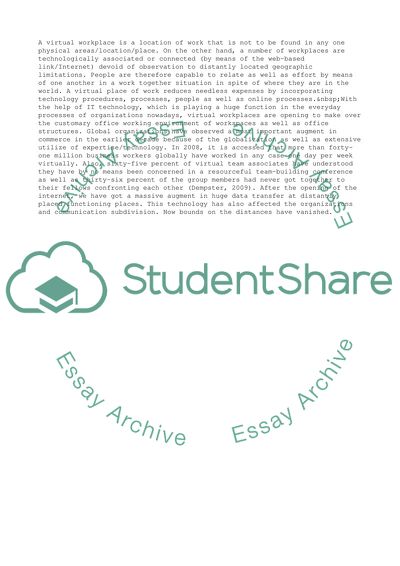Cite this document
(Virtual Workplace Environments Research Paper Example | Topics and Well Written Essays - 3250 words, n.d.)
Virtual Workplace Environments Research Paper Example | Topics and Well Written Essays - 3250 words. Retrieved from https://studentshare.org/management/1724726-employee-relations-2
Virtual Workplace Environments Research Paper Example | Topics and Well Written Essays - 3250 words. Retrieved from https://studentshare.org/management/1724726-employee-relations-2
(Virtual Workplace Environments Research Paper Example | Topics and Well Written Essays - 3250 Words)
Virtual Workplace Environments Research Paper Example | Topics and Well Written Essays - 3250 Words. https://studentshare.org/management/1724726-employee-relations-2.
Virtual Workplace Environments Research Paper Example | Topics and Well Written Essays - 3250 Words. https://studentshare.org/management/1724726-employee-relations-2.
“Virtual Workplace Environments Research Paper Example | Topics and Well Written Essays - 3250 Words”, n.d. https://studentshare.org/management/1724726-employee-relations-2.


